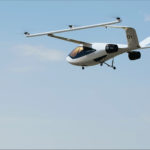The aviation industry is facing both challenges and opportunities as it pivots towards achieving net zero carbon emissions by 2050, according to a report from consulting services company Atkins.
It said that while the industry demonstrated its appetite at COP26 to advance ambitious actions to reduce emissions in aviation, the transition has no one-size-fits-all solution.
Energy storage solutions
“We must act now, despite shifting time horizons of what will be possible in the short, medium and longer-term,” the report said.
“The entire sector must become more ambitious in finding ways for aircraft to store the vast amounts of energy needed for flying.
“The good news is that development of new technologies and innovations are already underway. Building on this early progress, and thrusting forward with confidence and ambition, must now be the sector’s priority.”
Circular economy
Atkins said a “circular economy” was required in civil aviation to address all sources of emissions.
The report said: “While most carbon emissions from commercial aviation occur during flight operations, to truly meet carbon net zero targets, the industry must also tackle emissions resulting from production.
“Adopting a circular process that puts reuse and recycling as central tenets is environmentally attractive and is becoming increasingly economically attractive. This is described as the circular economy and adopting it as a strategy requires a ‘reduce – reuse – recycle’ philosophy that requires less energy and therefore supports a reduction in emissions.”
Other ways industry can act
Adapting other elements of the aviation eco-system would also result in environmental benefits, Atkins said.
“Along with investing in alternative, greener fuels to power flight, we must also sharpen our focus in other areas of aviation infrastructure and take a strong, coordinated approach as a sector,” the report said.
“This includes building Net Zero energy storage solutions and carbon neutral buildings at our airports, and extracting more value from our data to generate meaningful insights to inform better decision-making. We must also look ahead to determine how we can optimise the many exciting new opportunities that advances in air mobility are set to bring.”
Subscribe to the FINN weekly newsletter

